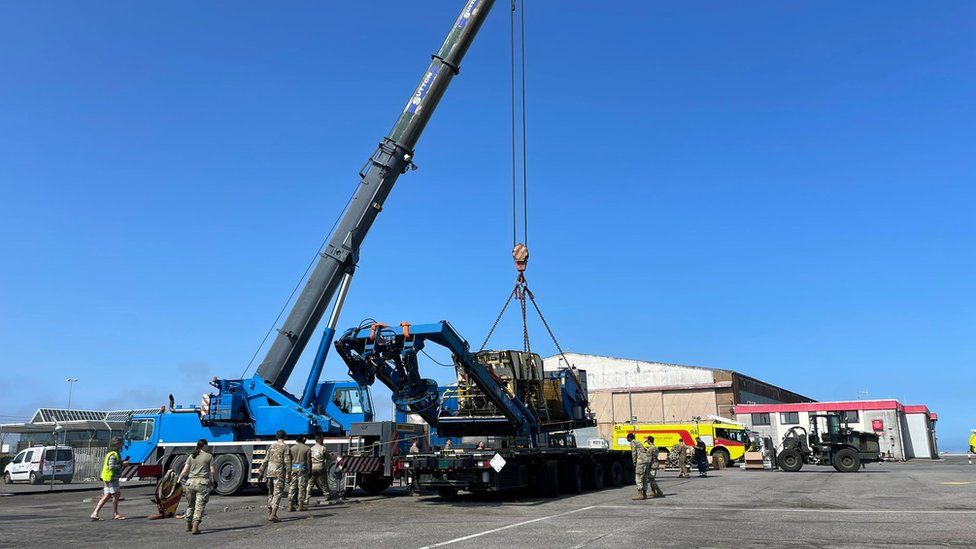From 3h ago
Experts warn time is running out with search area still vast
I’ve just been listening in to a very useful briefing from the Science Media Centre, in which the speakers were
Prof Alistair Greig, professor of marine engineering at University College London,
Dr Jamie Pringle, reader in Forensic Geosciences at Keele University and,
Dr Rob Larter, a marine geophysicist with the British Antarctic Survey.
Asked about the
huge size of the search area, Larter said: “We’ve all seen the reports of these sounds that have been detected, but the fact that the search areas still seems to be so large would seem to indicate that nobody thinks they have confidently been able to locate where those sounds are coming from.”
Given the lack of information from the seabed, said Greig, “I’d say we’re still pretty much where we were on Monday really, in terms of the search I guess”.
Asked about
how long it could take to bring the sub to the surface were it found, Greig said: “I don’t know how long it would take but in a normal operating scenario, I think it takes about two hours to get down to depth … and about two hours again [to come up].”
Asked about his
assessment of the chances of a successful rescue mission, Greig said: “I think the key thing is that they can find it … but it’s not going to be instantaneous; every step takes time – this is the problem. And we’re running out of time.”
Pringle said: “There’s always hope with these things but you know about the ‘golden first 24 hours’ – and we’re well past that stage. There’s always a chance – it’s never zero – but I think obviously in the long run, the longer the time that elapses, the lower the chances of success. That’s with anything from earthquake survival to searches. When it goes from a rescue to a recovery, I guess the coastguards will make that choice. But that will happen at some point.”
Larter said: “It’s just a desperate situation. It’s kind of unimaginable if people are alive, trapped in a submersible with oxygen supplies running down. It doesn’t bear thinking about. An objective assessment of where things are at the moment? It doesn’t look good. But I think as Jamie said, you have to try to stay optimistic for as long as possible.”
Asked
how long it could take to find Titan, Larter said: “How long is a piece of string? To find an object of this size in 3,800-metre water depth, it potentially could take weeks of intense survey. It very much depends on how tightly the area that has to be searched is defined.”
Asked whether
the disappearance of Titan could spell the end of deep sea tourism, Larter said: “I think when people look at it afterwards, this will no doubt trigger an investigation and I think this may prove to be a key moment in thinking about how such activities are regulated in the future. It’s clear from the reports I’ve read that there is a lack of regulation governing what people can put in the water.”
Greig added: “I think there are two issues here: there’s the regulation issue we’ve just heard about but there’s also the potential customer base – it may put people off wanting to pay to go on these trips.”
Asked if
we were any closer to knowing what had gone wrong, Greig said: “I think the only thing we know that went wrong is that they lost communications. Beyond that, we don’t know. We’re not even sure yet whether it’s on the surface or the seabed, which is complicating the search.”
Anomaly ‘consistent with an implosion’ was detected near where craft was operating when it lost communications

www.theguardian.com

 www.independent.co.uk
www.independent.co.uk







